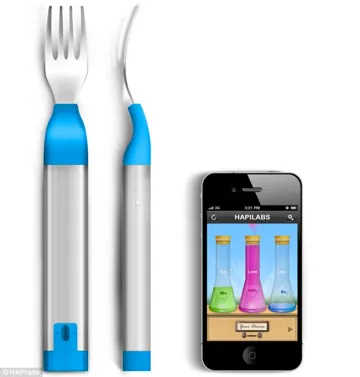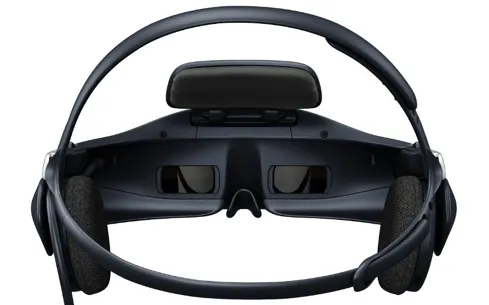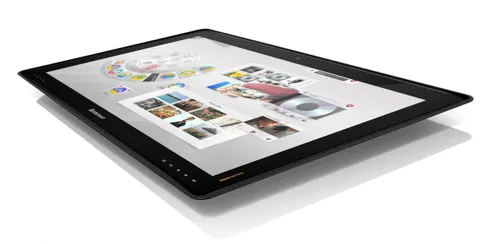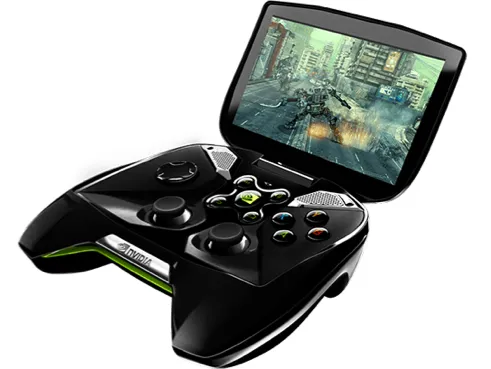1
Samsung Youm (pictured)
Flexible screens took centre stage at this year's Consumer Electronics Show. OLED technology means that displays, whether they're built into phones or TVs, can now be paper-thin and bendable. Using this new technology both Samsung and LG showed off concave TV prototypes, suggesting that in a few years time we'll no longer be thinking of TVs as just flat rectangles.
While the curved TVs certainly looked unusual and caught the attention of many show visitors, it was Samsung's concept for a flexible phone that stood out. Codenamed 'Youm' the phone has a pliable and near-unbreakable screen. It's not just a gimmick either, with the company's presidents showing how bending and twisting the phone could provide new ways of interacting with other technology. If it takes off, the Youm could reinvent the phone as we know it.
2
HAPIfork smart fork

Gadgets that monitor your health covered more of the show floor than ever before. Whether they measured your blood pressure, heart rate or the number of steps you'd taken (or in some cases all three) they all tended to offer a similar approach, apart from one: the smart fork. The HAPIfork contains a number of sensors that record exactly how quickly and how much you're eating. Eat too fast and the fork vibrates to warn you to slow down. It also counts exactly how many forkfuls you're shovelling in as a way of monitoring your portions. Whether it's an effective method of losing weight is yet to be seen, but it's certainly a novel idea.
3
Oculus Rift

This virtual reality headset got its first presentation to the public at this year's CES and we were lucky enough to be offered one of the first trials. And frankly, it is incredible. The headset creates a completely immersive 3D world, so the wearer feels like they can simply step into it and touch their surroundings.
By isolating each eye and presenting slightly offset images to each one, the Oculus Rift ceates a believable sense of 3D. Meanwhile, the head tracking, which let's you freely explore your virtual world, is instantly responsive. Combining these two features creates the sense that you've actually jumped into your game. It's no exaggeration to say that this was the most exciting piece of tech we've ever played with at CES.
Unfortunately, with kits being shipped to developers later this year, it doesn't look like consumers will get their hands on one until 2014 at the earliest.
4
Lenovo IdeaCentre Horizon PC

This is a desktop PC that you can eat your dinner off. Well not exactly, but this touchscreen, 27-inch desktop can be laid flat and turned into a new class of gadget: a table PC. When the IdeaCentre Horizon is horizontal, a new user interface pops up so that several people can interact with it in 'table mode'. The idea is that you can share images round a table, read newspapers or play games like a virtual version of Monopoly while it's laid flat amidst a group of people. It even has a built-in battery so that it can be carried around the home without having to turn it off.
5
Nvidia Project Shield

Taking the show by surprise, Nvidia, who usually make graphics cards for PCs, has created a handheld Android-based gaming console for hardcore PC gamers. At home, the Shield will stream your games from your PC via your Wi-Fi network and play them on its five-inch screen, providing you with high-end gaming on something that you can carry around with you.
When you take it outside of the home, it's essentially an Android mobile device with all the games and apps that come with the operating system. On the one hand, it provides unrivalled gaming on a portable console, but on the other it's a somewhat unwieldy way to play Android games on the go. Either way, its an innovative device, the likes of which we've never seen before.
Follow Science Focus onTwitter,Facebook, Instagramand Flipboard

